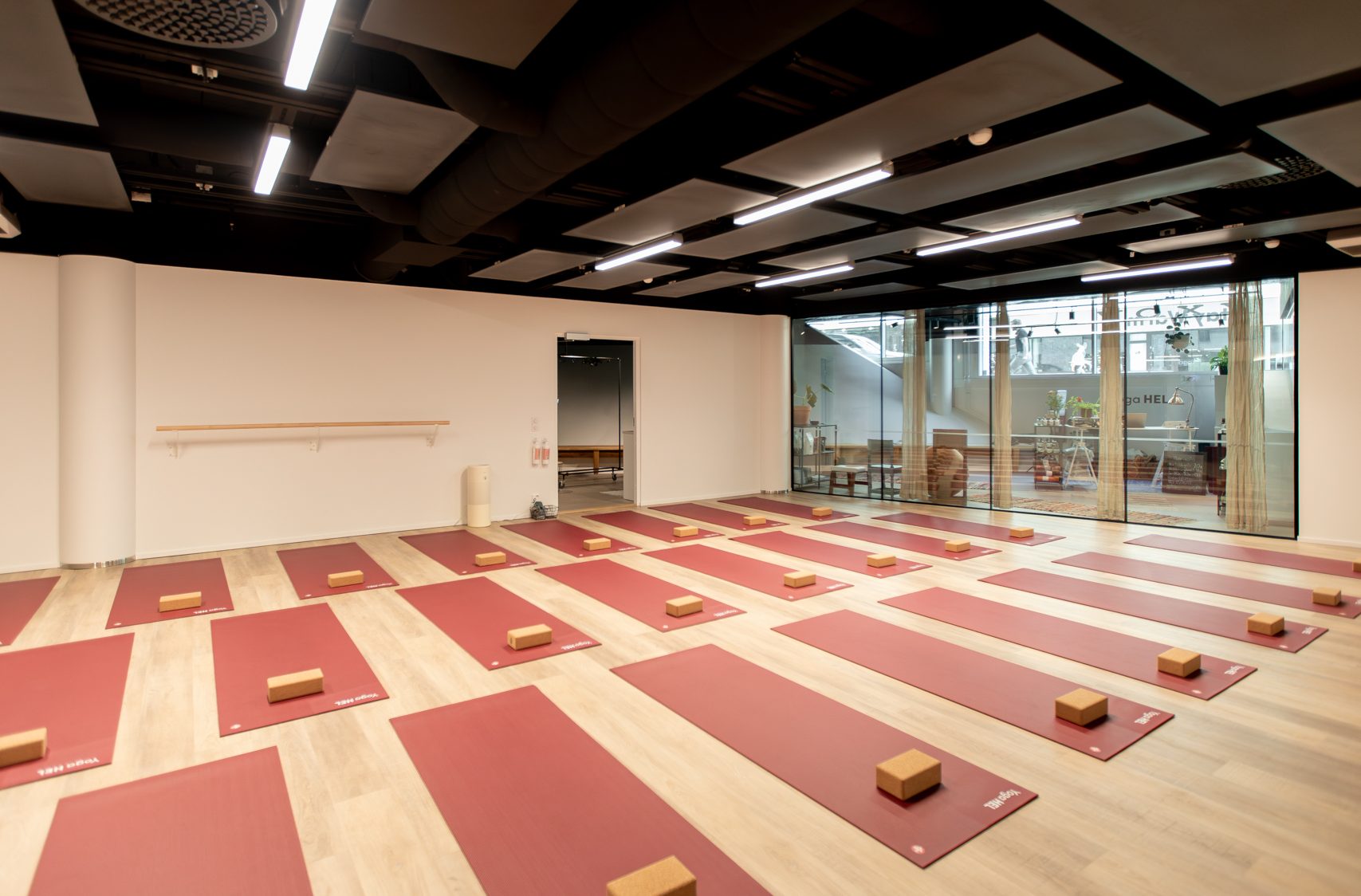Below are a few things you might find useful if yoga in a heated space is new to you. Please also feel free to contact us with any questions you might have!
Arriving to School
You can
register in advance and book a space from a class you want to attend. Be here 20-30 minutes early. This allows us to show you around and talk you through what will happen in class, as well as answer any questions you might have.
It will be helpful if you can let us know of any injuries or anything else you think we should know to support your practice.
Heat
The heated classes are around 40C, a little less for practices that involve more flowing movement. The class information will always mention if the class is heated or not.
The incoming air is heated in the pipes before its released into the room. The temperature is regulated by a thermostat and a CO2-meter so there is always enough fresh air for the number of people in the room heated to the right temperature. The teacher does not adjust this during the class.
The humidity is around 40% and there are air purifiers.
Clothing and Equipment
Wear comfortable, light clothes that do not restrict your movement.
We recommend wearing sports fabrics and short sleeves and shorts for the heat. Cotton materials get wet and hot during the practice.
While a swimming costume might feel like a great choice, you should leave that at home. We really don’t recommend you wear anything that does not stay in place during stretching and movement.
Bring a mat and towel to put over the mat for hot classes. The mat towel can be any towel that covers a good portion of your mat to make you comfortable. Take a separate towel for the shower.
You can also rent mats and towels at the studio.
Take the mat and towel into the yoga room with you, as well as a bottle of water. Leave everything else outside (the doors to the street are locked during classes).

Water
Hot yoga makes you sweat and thinking about your hydration in advance is going to make you more comfortable practising. Water can take around 15 minutes to actually work its way into the system, and that time can increase if you are dehydrated to begin with.
Hydrate well through the day before you come to class. Small amounts of water over the course of the day, for example every time you eat something, will be a much better idea than drinking litres right before class. Drink too fast on an empty stomach and the chances are you will be pretty uncomfortable practising.
Take a bottle of water to class and have small sips often if you are thirsty, between the asanas is a good moment. Over time you will learn how much water you need. If you look after yourself over the course of your entire day rather than just in class, you might find you think about water a lot less while practising than when you first started.
Food
Belly full of water will not make you comfortable and neither will a belly full of food. If you are really hungry and need something before, have a smoothie or something else light on your digestion.
We plan to start making morning porridge at the school after early classes, so you won't have to be hungry for long after class.
Pace yourself
Think of your effort as more of a long walk over the hills than a running race. Find what feels right for you so you can stay for the full class, even if that means you have to take more breaks or skip asanas until you get used to the heat.
Take all the breaks you need. You can stand still or sit down, cross your legs and focus on your breath. Stillness and breath work to calm the body and with time you will learn to trust this.
Learning self-awareness and patience towards yourself is part of the practise, and it is not always the most sensible thing to do as much as you physically can right from the start.
